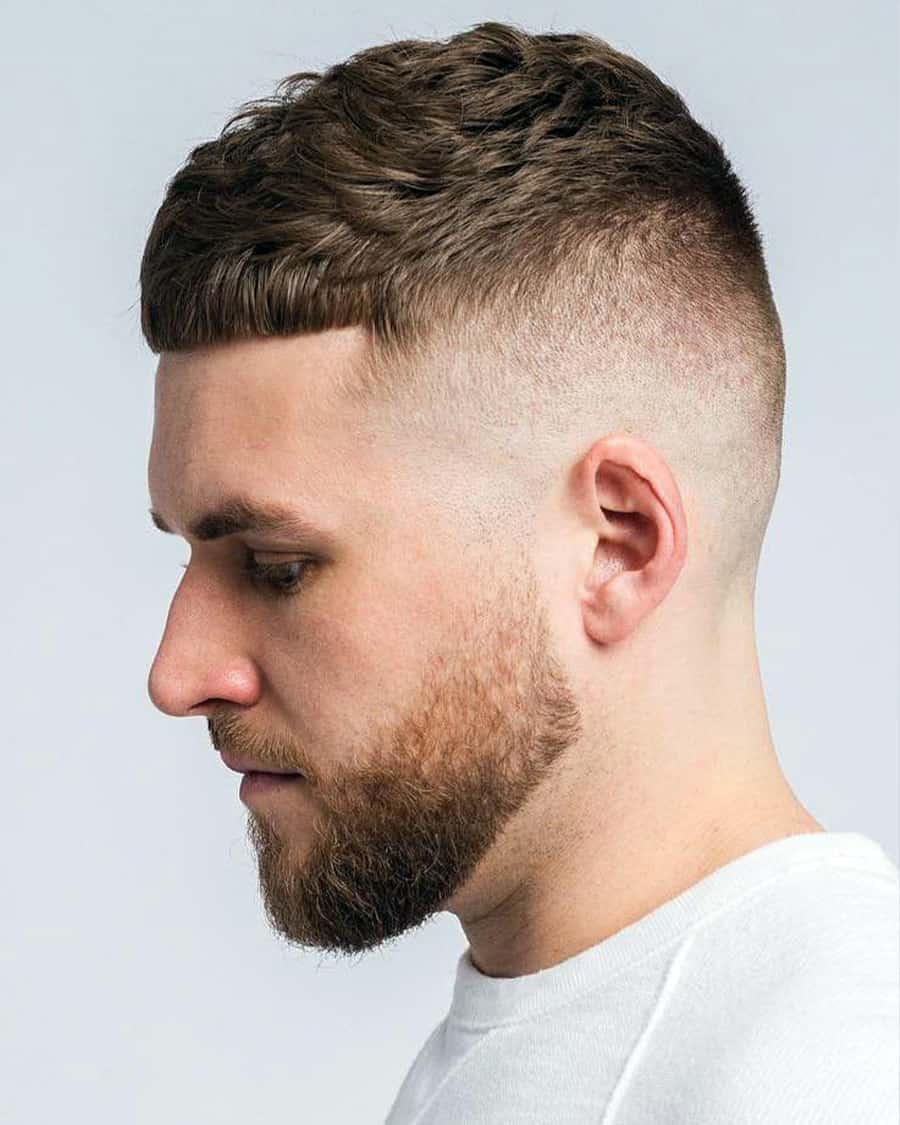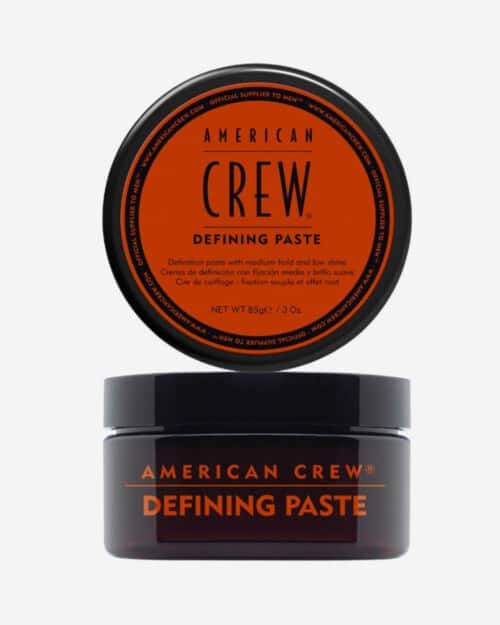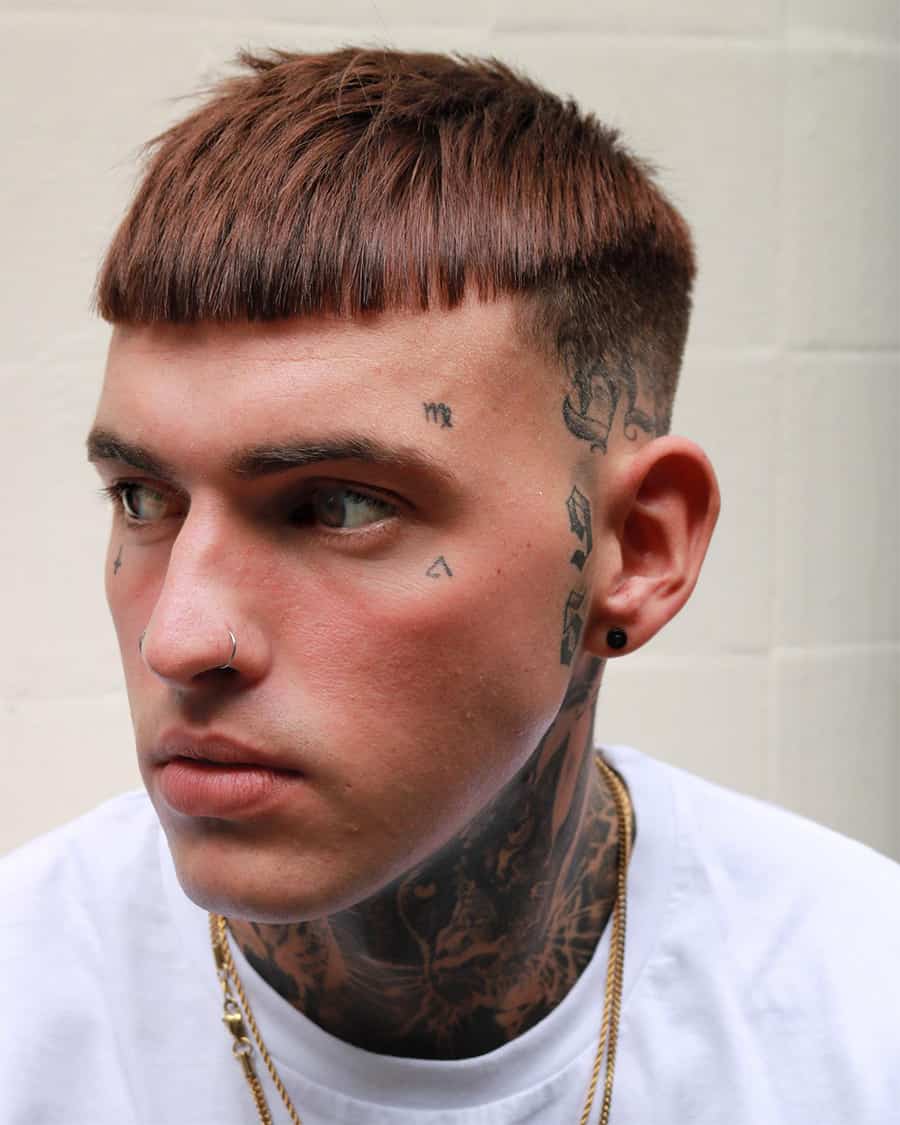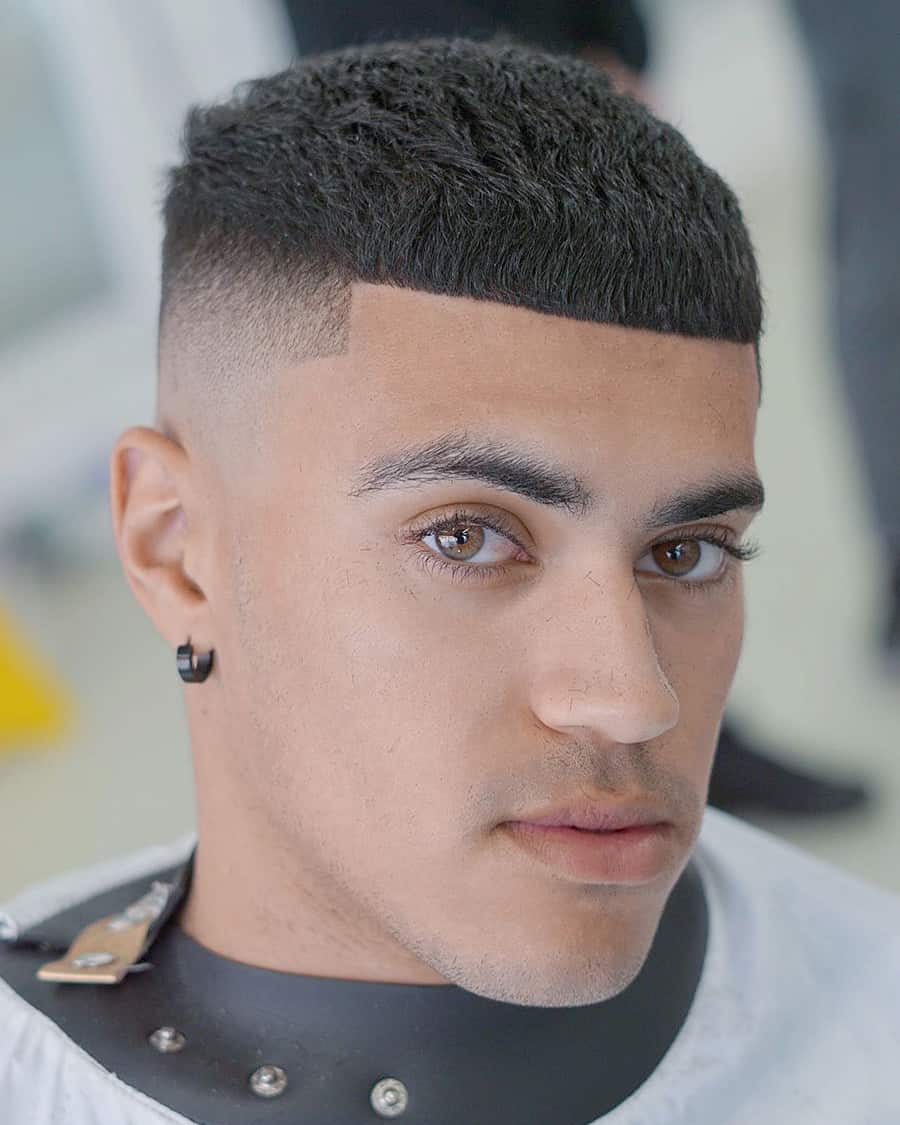
The Caesar Haircut: What It Is & The Best Styles For 2024
It’s the short, back and sides haircut that comes with fringe benefits.
Similar to a crew cut or a French crop, the defining factor of a Caesar haircut is the addition of a fringe. Inspired by the one and only Julius Caesar (hence its name), rumour has it that the Roman general had it fashioned that way to hide his receding hairline. Whether that’s true or not, 100s of years later, it remains a go-to for a lot of guys wanting to play around with the standard short back and sides.
Incredibly versatile, it’s your choice how you wear it – clean and clippered or messy and textured, although the slightly longer length on top is what allows for the extra texture and means it can easily be tailored to your liking. You can also choose from various different fades to complement your specific hair type and face shape.
Ready to feel inspired? Here’s everything you need to know before you brief your barber. Hail, Caesar!
What is a Caesar haircut?

@thecommodoreatl
A spin-off of the short, back and sides and a cousin of the French crop, the Caesar cut is a short, tapered haircut with a sculpted, blunt fringe.
“Short, back and sides haircuts can vary so much in length and don’t necessarily need to incorporate a fade, but that’s what sets the Caesar apart,” explains Luke Benson, London Hairdresser of the Year and barber to celebs including Roman Kemp and Tom Grennan.
“A short, back and sides could be a soft scissor cut or a clippered finish at grade 3 or 4 so you don’t see the fade definition, but with the Caesar it needs to be a clipper cut to get that super-short fade and blunt front area. There should be a contrast between the shortness in the faded areas and the length on the fringe and the top.”
According to Keri Blue, founder of Hair has no Gender, the blended fade is usually around 0 or 0.5 to make the profile of the cut and short, textured top section really prominent.
What kind of hair does a Caesar cut suit?




“It can suit most hair types although you wouldn’t get that smooth finish at the front on curly or afro hair,” explains Luke. “However afro hair is often cut to a Caesar shape and will incorporate the texture as long as the front has the squared off, blunt finish.”
It’s also great for people with receding or thinning hair, adds Keri. “The short fringe and high fade makes the hair look fuller and thicker. Darker hair also shows off the fade better so might be worth considering.”
As for anyone who should avoid it – only those with front cowlicks should steer clear as the fringe won’t sit flat, making it almost impossible to style.
What face shape does a Caesar cut suit?
The experts agree that the Caesar cut suits pretty much every face shape, as long as the fringe length and taper height are taken into account.
Because it’s a blunt cut it also really complements angular features such as a strong jawline or cheekbones and it looks great with facial hair too.
How to style a Caesar haircut






If your hair is textured, a dust or dry clay should be your go-to to keep it messed up and gutsy. A matte paste through the fringe will also help to add definition.
Salt sprays can make a good addition if your hair is fine or wavy while a polishing cream will help to keep straight hair and neat fringes smooth and in place.
However you style your Caesar cut, a blast of hairspray won’t go amiss either.
16 cool Caesar haircuts for 2024
Textured or straight, the photos that follow showcase all the Caesar variations you could ask for. Pick your favourite and march straight to the barbers feeling confident with you cut of choice
Temple fade Caesar haircut with texture

@criztofferson
Longer on the back and top but still with very graphic structured angles around the neck and temples, this can be categorised as a Caesar cut owing to the bluntness of the fringe.
Combining it with a shaped section of facial hair around the jawline balances the cut so it doesn’t appear too top heavy.
Short high fade Caesar haircut

@domthebarberian
Proving how flattering a beard can look with a short crop, the high fade at the sides and back creares the perfect contrast to the clippered fringe and longer facial hair.
Using a wax or pomade to define some of the strands on top gives the hair a subtle texture too.
One-length Caesar haircut

@joshfarmer__
Keeping the hair all one length on top makes this cut feel quite ‘modish’. A slightly longer length, the definition around the hairline is harder to see because of the grey hair but the brushing forward of the fringe keeps it in the Caesar cut category.
Using scissors to trim the fringe into shape also creates a feathered, textured finish.
Straight fringe Caesar haircut

@rockstarsbarbers
The ruler straight finish on this fringe almost mimics a bowl cut, except the faded edges keep it softer and the hair through the top sections and crown have been left longer and layered to give it more of a contemporary feel.
A fine tooth comb will help guide the hair into place to get the perfectly neat line across the forehead while a wax or pomade will introduce some texture and volume to the longer hair on top.
Messy Caesar haircut with taper fade

@tombaxter_hair
Ideal if you have thick, textured or wavy hair, this short, well-balanced Caesar cut blends seamlessly from top to bottom thanks to the introduction of a high taper fade.
Leaving the hair ever so slightly longer on the sides ensures the dark, textured hair on top doesn’t feel disconnected, and the fade is taken right the way down into the beard, tying everything together and making it feel purposeful.
Wavy Caesar haircut with high skin fade

@z_ramsey
Incorporating a dramatic bald fade around the back and sides, the top has been left longer to create a modernised take on a classic military haircut, the high and tight.
The rugged facial hair empasises this masculine feel further – just ensure the beard isn’t longer than the top section otherwise it will appear unbalanced.
Super straight Caesar haircut

@hayden_cassidy
Blunt edges that have been softened with the clippers gives this Caesar cut an almost fluffy-like effect.
Combed forward to show off the fringe, if your hair isn’t naturally straight, you might need straighteners to achieve this sort of uniformity.
A clean shaven face also accentuates the silhouette on top, giving a nod to the military-esque inspiration for these sorts of cuts.
Line design Caesar haircut

@bagir94
Rather than the cut in around the fringe area, this uses a line design to separate the length on top with the fade on the back and sides, creating a disconnect.
Shaping the hair into a curve around the temple and then pairing it with a tapered beard allows for maximum contrast and showcases some seriously precise clippering.
Sometimes referred to as a ‘fade separator’, try it if you’re feeling bold and have dark hair that will show it off at its best.
Z-shape fringe Caesar haircut

@ali_bar.ber
This still fits the Caesar cut criteria but rather than a heavy blunt fringe, the length is mostly kept through the crown and top section.
Shorter at the front and blended into the skin fade on the sides using a Z shape, this would need to be regularly maintained but would also work well for thick hair to remove some of the length and weight around the front sections.
Textured on top with low skin fade

@criztofferson
Lining the fringe up with the end of the eyebrows opens up the face and would work well for long or oblong or narrow face shapes looking to create the illusion of width.
Starting the fade slightly lower on the head also makes the graduation between the length on top and the fade towards the nape of the neck slightly softer than a harsh step effect.
Thatch effect Caesar cut

@m13ky
A different way to wear your hair in a textured crop, this zig-zag style is neat, precise and created with a tail comb to fashion the ‘thatch’ effect.
The high skin fade and almost invisible side burns merge into a subtle jawline of stubble, meaning all focus remains on the crown and top sections of the cut.
A matte paste will help to keep your shape in place.
Traditional Caesar-style crop

Fitting the dictionary definition of the Caesar haircut, this has a fringe, check, a fade, check and longer texture through the top sections, check.
Using a salt spray or clay and messing up the hair with your fingers will give it that rugged edge, while the inch-long ‘steps’ from fringe to fade don’t look too harsh in contrast to the texture on top.
Caesar cut with line up

@glennmcgoldrick
Proving that thick, textured or type 4 hair types can pull off a Caesar, while this does still have length on the top it is slightly shorter and remains the same length from front to back.
Brushed forward, the line up around the hairline is razor sharp – just be mindful if you have a square or oblong shaped face as this could have the potential to highlight that even more so.
Curly Caesar haircut with mid fade

@travisanthonyhair
With curly, wavy or textured hair it’s hard to get that blunt precision fringe. Yet this style still falls into the Caesar category because it has a mid fade that bridges the gap between a smooth hair-free neckline and the longer length on top.
Style with a wax or paste that works with, and helps to define, the natural curls.
Entry-level French crop

Showing off it’s care-free credentials, this medium-length fringe and wearable fade is great inspiration if you’re new to shorter length cuts.
Keeping the texture natural and with a smattering of stubble, this is a low-key Caesar cut that still looks the part.
Caesar haircut with skin fade

The uneven fringe on this crop pairs perfectly with the high, ultra-fine fade, making it look less regimented.
Brushing the hair forward from the crown, a key aspect of the Caesar cut is to be parting-free.
Complete the look using a matte dust to create some grit, volume and texture.









